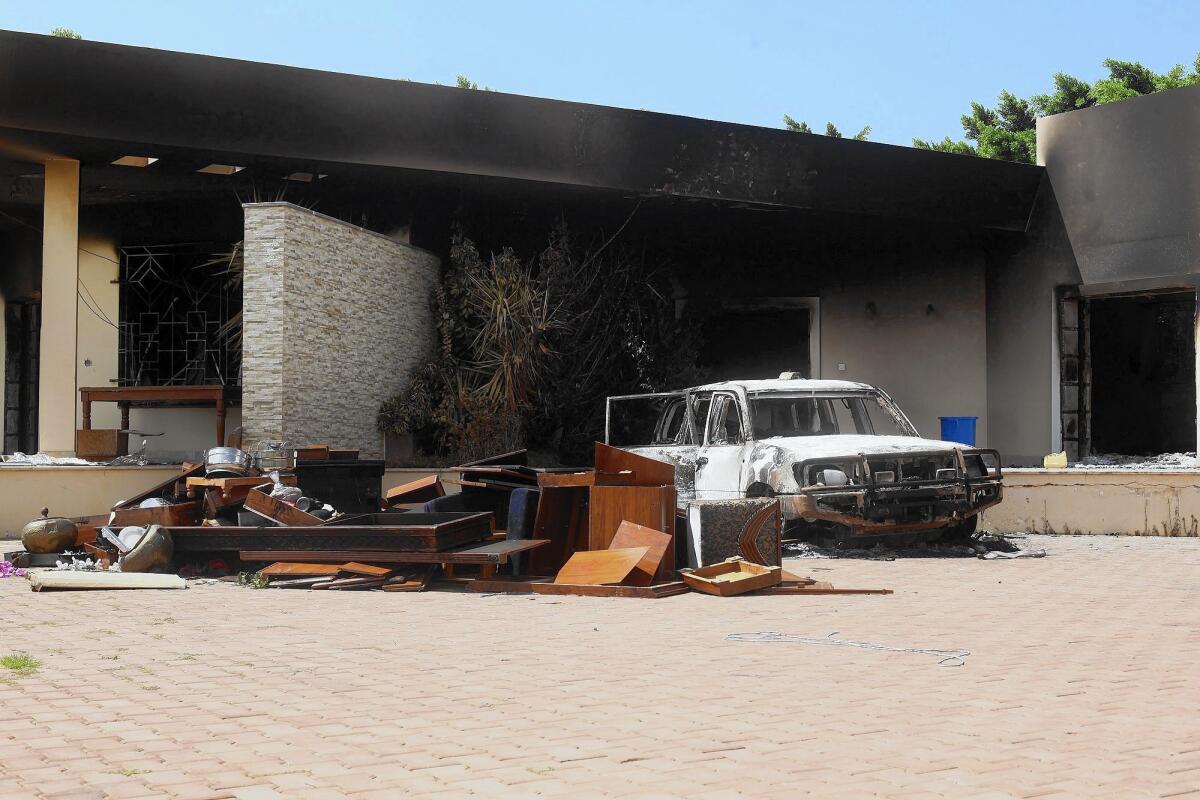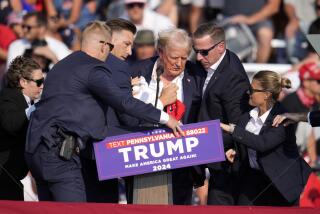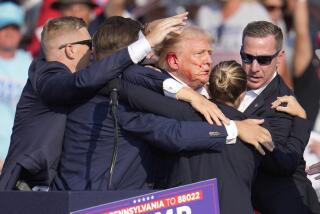The Benghazi, Libya, attack: What investigations have found

The recently released House Intelligence Committee report on the Sept. 11, 2012, attack against an American diplomatic facility in Benghazi, Libya, was the seventh such inquiry since 2012. An eighth, led by a House select committee, began work this year.
Democrats accuse Republicans of politicizing the attack by launching endless investigations into the terrorist strike, which killed Ambassador J. Christopher Stevens and three U.S. staff members. They say persistent conspiracy theories about the attack have been debunked, often by GOP-led congressional committees.
Republicans insist questions remain and that some inquiries were flawed or inadequate.
Here’s a look at some of the main questions raised about Benghazi and what investigations have concluded.
Were would-be rescuers ordered to stand down rather than head to the facility to try to rescue Stevens and his colleagues?
Reports say no:
“Appropriate U.S. personnel made reasonable tactical decisions that night, and the committee found no evidence that there was either a stand-down order or a denial of available air support.”
— House Intelligence Committee report, November 2014
“The progress report finds that officials at the Defense Department were monitoring the situation throughout and kept the forces that were initially deployed flowing into the region. No evidence has been provided to suggest these officials refused to deploy resources.”
— House Republican Conference report, April 2013
“There was no ‘stand down’ order issued to U.S. military personnel in Tripoli who sought to join the fight in Benghazi.”
— House Armed Services Committee report, February 2014
Last month’s report from the House Intelligence Committee echoed past investigations when it found no evidence that the State Department issued a stand-down order to stop rescuers from reaching the Benghazi complex. Instead, investigators said State Department officials in Libya coordinated with the CIA, which provided security personnel, including two people killed in the attack.
A February report from the House Armed Services Committee said the Defense Department ordered some military personnel to remain in Libya’s capital, Tripoli, out of concern that the Benghazi strike may have been the start of coordinated attacks around the country. A commander characterized it as a strategic decision to protect the American Embassy in the capital, not a stand-down order.
At the same time, the report said the “severely degraded” U.S. military presence in the region affected readiness because there were fewer military personnel available to send to the facility.
Did U.S. officials have intelligence that predicted the attack and did they fail to share such information with personnel in Benghazi?
Reports say no:
“There was no singular ‘tactical warning’ in the intelligence reporting leading up to the events on September 11, 2012, predicting an attack on U.S. facilities in Benghazi on the 9/11 anniversary.”
— Senate Intelligence Committee report, January 2014
“The majority members note the absence of an imminent threat in Benghazi.... In Benghazi, U.S. forces were confronted with the unexpected.”
— House Armed Services Committee report, February 2014
“The board found that intelligence provided no immediate, specific tactical warning of the September 11 attacks. Known gaps existed in the intelligence community’s understanding of extremist militias in Libya.”
-- State Department Accountability Review Board report, December 2012
The House Intelligence Committee report found that American officials in the region had “sufficient warning of the deteriorating security situation in Benghazi,” but not specific threat information related to the Sept. 11 plans.
These findings dovetail with a report from the Senate Intelligence Committee in January, which said Islamist militia groups had been training and conducting attacks in the Benghazi area before September. However, its investigation found that the Benghazi attack “did not necessarily indicate extensive planning.”
Both reports found that a former government official in Benghazi had made an attempt to contact the Libyan intelligence service about four hours before the attack with a warning, but was unable to reach the agency.
Did the Obama administration deliberately mislead the American public by claiming that the attack was due to a spontaneous protest? Did the White House intervene to alter so-called talking points used by then-U.N. Ambassador Susan Rice, who inaccurately attributed the violence to anger over an anti-Islam video?
Reports differ:
“The majority believes that the CIA talking points were flawed but — as discussed in the report — painted a mostly accurate picture of the [intelligence community’s] analysis of the Benghazi attacks at that time.”
— Senate Intelligence Committee report, January 2014
“Perhaps the most troubling aspect of this interagency correspondence is the extent to which senior State Department officials repeatedly objected to the inclusion of any information that might cast the Department in an unflattering light.”
-- House Foreign Affairs Committee report, February 2014
“In the days following the attacks, White House and senior State Department officials altered accurate talking points drafted by the Intelligence Community in order to protect the State department.”
— House Republican Conference report, April 2013
The most recent House report disputed allegations that the Obama administration edited talking points given to Rice to use during television interviews after the incident. Instead, the report said the CIA, which was dealing with conflicting intelligence reports from multiple sources, was primarily responsible for editing Rice’s talking points and using what the report called “imprecise language” to describe the incident. Days after Rice delivered her remarks, the agency determined that a protest had not taken place.
In January, the Senate Intelligence Committee report came to a similar conclusion, saying the talking points passed through standard government channels and that the CIA was responsible for removing direct references to Al Qaeda and terrorist groups.
But a 2013 report from the House Republican Conference concluded that although the CIA made the majority of the edits, it was State Department officials who mainly objected to language linking the incident to terrorism. That report stated that the State Department wanted to edit the points to minimize criticism of its handling of terrorist warnings in Libya before the attack.
Did the State Department fail to provide adequate resources to guard its facilities in Libya?
Reports say yes:
“Senior State Department officials knew that the threat environment in Benghazi was high and that the Benghazi compound was vulnerable … yet the department continued to systematically withdraw security personnel.”
— House Republican Conference report, April 2013
“CIA security personnel testified that State Department [diplomatic security] agents repeatedly stated they felt ill-equipped and ill-trained to contend with the threat environment in Benghazi.”
— House Intelligence Committee report, November 2014
“As the violence increased, U.S. personnel in Libya repeatedly requested additional security from the State Department.... Yet, in the days and months before the attacks, the Department withdrew two Diplomatic Security (“DS”) mobile security detachments and a U.S. military Security Support Team (“SST”).”
— House Foreign Affairs Committee report, February 2014
Nearly all the investigative reports have been critical of the State Department’s pre-attack planning, including last month’s House Intelligence Committee report. Ine State Department security personnel concerns over a lack this latest report, investigators citof training and resources at the Benghazi facility, as well as requests for additional support that went unheeded by the embassy in Tripoli. In one case, CIA personnel defending the facility during the attack said many of the State Department employees assigned to protect the compound were unarmed.
More to Read
Sign up for Essential California
The most important California stories and recommendations in your inbox every morning.
You may occasionally receive promotional content from the Los Angeles Times.










